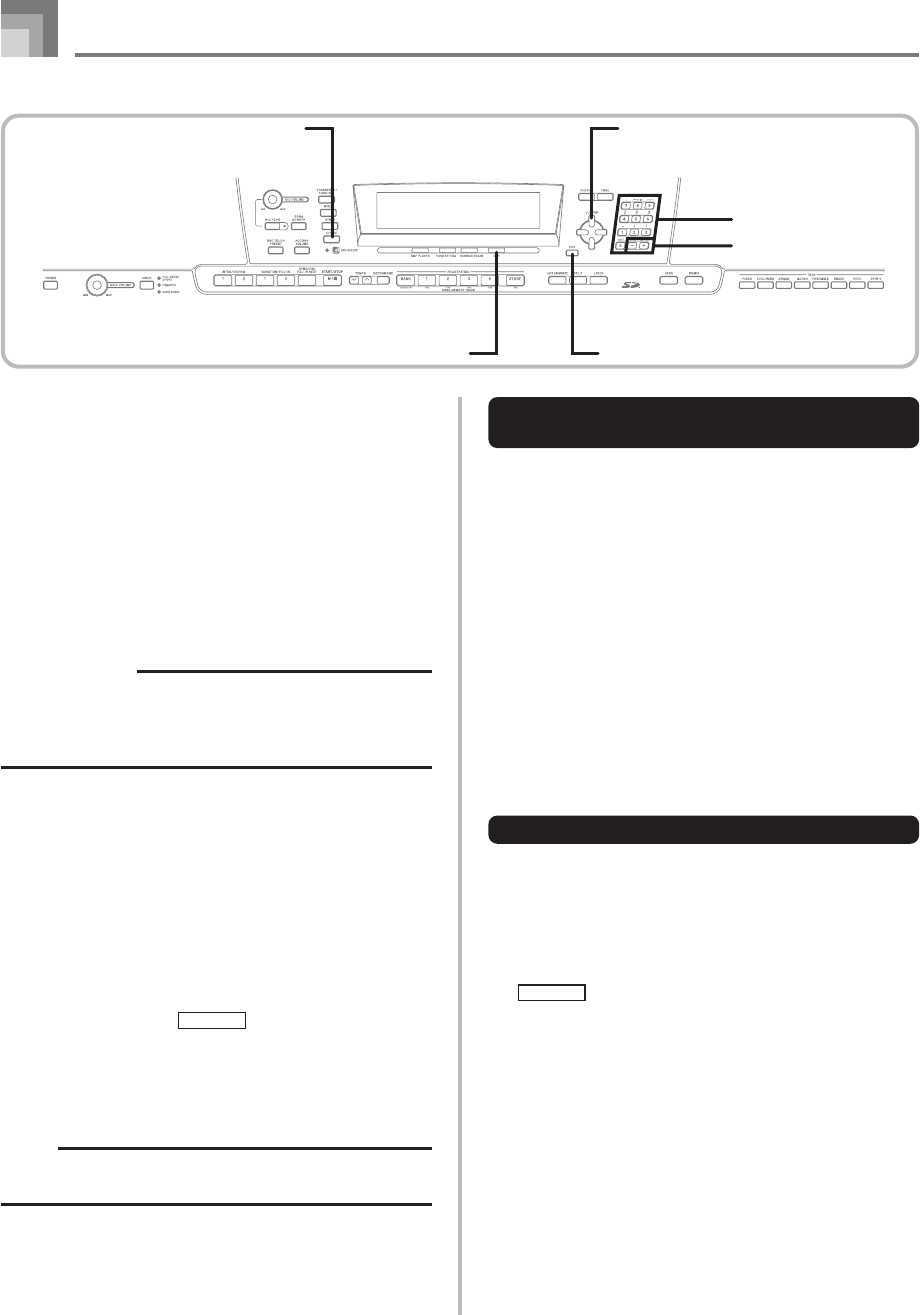
E-26
Applying Effects to Tones
Selecting a DSP Type
In addition to the 100 built-in effect types, you can also edit
effect types to create your own and store them in user
memory. You can have up to 100 effect types in user memory
at one time. You can also select the DSP type of the last DSP
enabled tone that you used. This means you always have
access to the DSP type of Advanced Tones and tones you
download over the Internet. To select the DSP type of the last
DSP enabled tone that you used, select “Ton” in step 3 of the
procedure below.
Perform the following steps to select a DSP type.
PREPARATION
• When using a DSP effect, you should use the Mixer to
confirm that the DSP lines of the required parts are
turned on. See “Mixer Function” on page E-39 for more
information.
1
Press the EFFECT button so the EFFECT indicator
appears on the display.
2
Press the [̈] CURSOR button.
• The DSP type setting screen (step 3) will appear
automatically about fives seconds after you press the
button.
3
Use the [+] and [–] buttons or number buttons to
select the type of DSP you want.
• See the separate
Appendix
E for information about
the DSP types that are available.
• Here you could also change the parameters of the
effect you selected, if you want. See “Changing the
Settings of DSP Parameters” for more information.
NOTE
• The DSP type display area shows the DSP number (000
to 199), or “Ton” (user tone created using DSP).
Changing the Settings of DSP
Parameters
You can control the relative strength of a DSP and how it is
applied. See the following section titled “DSP Parameters”
for more information.
1
After selecting the DSP type you want, use the [̇]
and [̈] CURSOR buttons to display the parameter
whose setting you want to change.
• This displays the parameter setting screen.
2
Use the [+] and [–] buttons or the number buttons
to make the parameter setting you want.
• Pressing the [+] and [–] buttons at the same time
returns the parameter to its recommended setting.
3
Press the EFFECT or EXIT button.
• This exits the tone or rhythm setting screen.
DSP Parameters
The following describes the parameters for each DSP.
DSP
■
Parameter 0 to 7
These parameters differ in accordance with the algorithm*
of the selected DSP type. For details, see the separate
Appendix
E, and the “algorithmlist_e.pdf” file in the
“English” folder on the CD-ROM that comes with your
digital piano.
* Effector structure and operation type
■
DSP Reverb Send (Range: 000 to 127)
Specifies how much of the post-DSP sound should be sent
to reverb.
■
DSP Chorus Send (Range: 000 to 127)
Specifies how much of the post-DSP sound should be sent
to chorus.
CURSOREFFECT
DSP EXIT
Number buttons
[+]
/
[–]


















